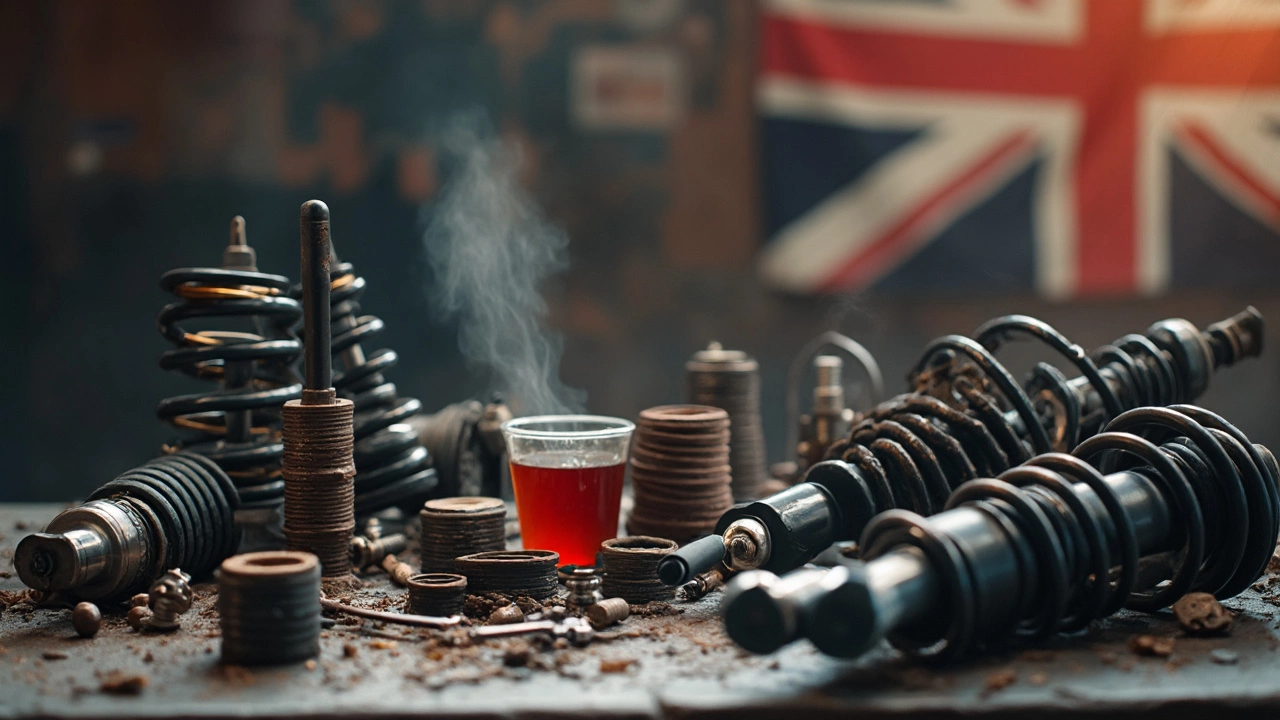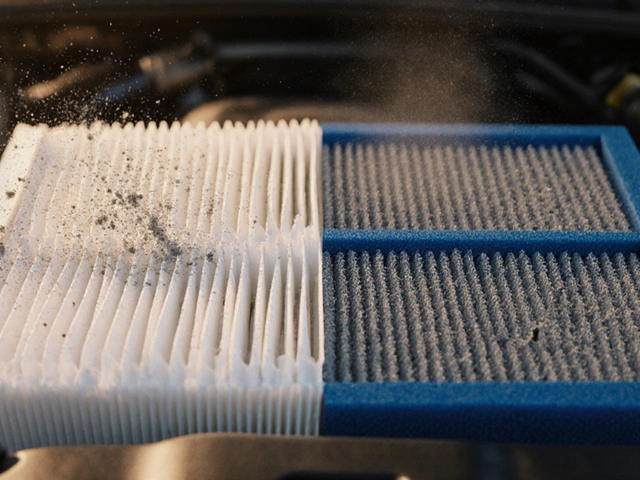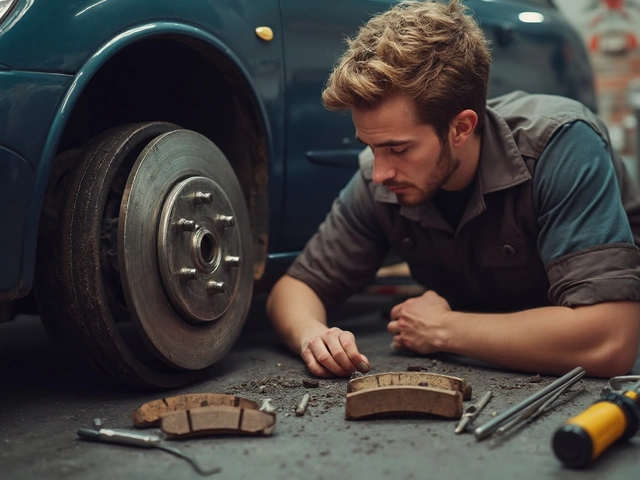Ever driven over a pothole and felt your coffee jump halfway out of the cup holder? That jolt comes down to your car’s suspension. If your suspension’s not in shape, it’s not just uncomfortable—your car can even become unsafe. Learning the basics about suspension parts can save you money, headaches, and maybe a few spilled drinks.
Here’s the deal: your car’s suspension isn’t just one thing, but a team of parts working together. Springs, shocks, and control arms handle bumps, keep your car gripping the road, and stop you from bouncing around like you’re on a trampoline. Understanding what these parts do lets you spot problems before they turn serious—whether you’re trying to avoid wearing out your tires early or you just want a smoother ride for your family and your dog (trust me, Rufus appreciates it as much as you do).
- What Is a Car Suspension System?
- Main Suspension Parts Explained
- How Suspension Parts Work Together
- Common Signs of Suspension Trouble
- Tips for Prolonging Suspension Life
- When to Replace or Upgrade Your Parts
What Is a Car Suspension System?
Picture your car riding down the highway. Underneath, a bunch of parts work together to keep things stable, comfy, and safe. This setup is called the suspension system. Its main job is to absorb bumps, help you steer, keep your tires touching the road, and actually make driving possible at any decent speed. Without suspension, every crack or pebble would turn your ride into a teeth-chattering mess.
The car suspension is a network of springs, shocks, struts, and linkages connecting the frame to the wheels. These parts aren't just there for comfort — they keep your car balanced when turning, aligning your wheels, and stopping you from bottoming out over speed bumps.
- Springs carry your car’s weight and absorb rough hits from the road. Most cars use coil springs, while trucks might use leaf springs.
- Shocks/Struts control bouncing. Without these, every bump would send your car bouncing for ages.
- Control arms and bushings keep the wheels moving up and down (not side to side) and help align the tires right.
- Anti-roll bars (sway bars) stop too much body roll when turning.
Car suspensions have changed a lot over the years. These days, most new vehicles come with independent suspension, meaning each wheel can move up and down on its own instead of all together. That’s why modern cars handle curves and rough patches way better than older models from your grandpa’s era.
| Suspension Type | Common Use | Main Benefit |
|---|---|---|
| Independent | Most passenger cars, SUVs | Smoother ride, better handling |
| Semi-independent | Small cars, some vans | Lower cost, simpler build |
| Solid axle | Trucks, off-road vehicles | Durable, handles heavy loads |
So next time you’re driving and the road gets rough, remember your suspension is the unsung hero—making sure you, your family, and even the dog don’t feel every pebble you roll over.
Main Suspension Parts Explained
If you pop the hood or peek under your car, you’ll see a mix of metal bits. But when it comes to keeping the ride smooth and safe, a few key car suspension parts do most of the heavy lifting. Let’s break them down, so next time you hear a rattle or clunk, you’ll know what’s what.
- Springs: These coil or leaf metal strips do the job of absorbing bumps. When you hit a pothole, springs compress and take the hit before it shakes up the whole car. Most modern cars use coil springs because they're compact and durable.
- Shock Absorbers (Shocks) and Struts: Springs alone would leave you bouncing for days. Shocks and struts slow down that bounce and help keep your tires stuck to the road. Without them, the car would just float after every bump. A strut is like a shock, but it also acts as a main support part of the suspension.
- Control Arms: Control arms connect the wheel assembly to the car’s frame. Think of them like your car’s hinges, letting the wheels move up and down without wobbling all over. Ball joints at the end of the control arms let everything pivot smoothly.
- Sway Bars (Stabilizer Bars): When you turn a corner, these bars help keep the car’s body from rolling too much. They connect opposite wheels together and push against body roll, making turns feel less hair-raising.
- Bushings: These rubber pads sit between metal parts. Bushings cut down noise and vibrations, making your ride less noisy and more comfortable.
Here’s a quick table with what the main parts do and how long they typically last:
| Part | Main Job | Average Lifespan |
|---|---|---|
| Springs | Absorb bumps and keep car at level height | 50,000–100,000 miles |
| Shocks/Struts | Control and stop bounce after bumps | 50,000–70,000 miles |
| Control Arms | Hold wheels in line, manage up/down movement | 90,000–100,000 miles |
| Sway Bars/Links | Reduce body roll during turns | 80,000 miles (links often wear faster) |
| Bushings | Reduce metal-on-metal contact and noise | Depends—often replaced with other parts |
Some cars have extra features—like air suspension or adjustable dampers—but these five parts cover the basics. If you ever feel your car pulling to one side, hear clunking over bumps, or notice the ride just isn’t as solid, chances are one of these parts is either worn out or not doing its job.
How Suspension Parts Work Together
Think of your car’s suspension as a team sport. Every part—springs, shocks, struts, control arms, bushings—needs to pull its weight or things get wonky fast. When you hit a bump, the springs soak up the impact. Without them, you’d feel every crack in the road like a punch to the gut. But springs alone would leave your car bouncing down the street, so shocks step in to calm things down. They control how fast the springs move, stopping that annoying bounce right away.
The car suspension system also relies on parts like control arms and bushings. Control arms link your wheels to the frame, letting them move up and down but keep their side-to-side alignment. Bushings act as little cushions between metal parts, blocking out annoying squeaks and softening up vibrations. If you hear creaking or knocking, a worn-out bushing or control arm might be the culprit.
Sway bars (sometimes called stabilizer bars) add another layer of stability, especially in corners. They connect the left and right sides of your suspension to cut down on body roll when you take a sharp turn or swerve. All of these parts team up to give you traction, comfort, and control—three things nobody wants to lose behind the wheel.
Here’s a simple table showing who does what in your car’s suspension system:
| Part | Main Job |
|---|---|
| Springs | Absorb shocks from the road |
| Shock Absorbers | Control spring movement, reduce bounce |
| Struts | Support the suspension and absorb impacts (combo unit) |
| Control Arms | Hold wheels in place while letting them move up and down |
| Bushings | Cushion joints, prevent metal-on-metal contact |
| Sway Bars | Stabilize car during turns |
If any one of these parts wears out, the whole system can lose its balance. That’s why a squeaky bushing or a blown shock isn’t just annoying—it can actually make your car harder to handle, mess with your tire wear, or turn a quick swerve into a close call. So, keep an eye (and ear) out for weird noises or changes in how your car drives. It usually means the “team” isn’t working together like it should.

Common Signs of Suspension Trouble
Your car rarely just falls apart all at once—usually, suspension parts give you plenty of warning. Catching issues early can save you cash and keep everyone safe. Here’s what you should look for:
- Shaky or Bouncy Ride: If your drive feels like a roller coaster over normal roads, your shocks or struts might be worn out. This is often the first hint something’s off.
- Poor Handling: Does the car feel like it’s swaying too much on turns? That extra body roll could point to a worn sway bar or busted bushings.
- Dips When Braking: Notice your car dives nose-first when you brake hard? That usually means your front shocks need help.
- Uneven Tire Wear: Check your tires. If one’s more worn than the rest, your alignment is off because of bad control arms or bushings.
- Strange Noises: Thunks, clunks, or creaks when you hit bumps or turn might be tired suspension parts—like ball joints or strut mounts.
- Leaking Fluid: Shocks or struts leak when the seals fail. Spot oily drips near your wheels? Time to look closer.
Here’s a quick look at how these issues show up in real life:
| Sign | Possible Cause | Fix Needed? |
|---|---|---|
| Bouncy or unstable ride | Worn shocks/struts | Replace shocks/struts |
| Car pulls to one side | Bad control arms or alignment | Check alignment and control arms |
| Squeaks, creaks, or clunks | Damaged bushings or ball joints | Inspect and replace parts |
| Uneven tire wear | Improper alignment, bad parts | Wheel alignment, part inspection |
| Fluid around wheel/under car | Leaking shock or strut | Replace leaking part |
Don’t ignore these signs if you care about car safety. Suspensions aren’t just about comfort—they’re what keep your car under control. Think something’s wrong? Get your car suspension checked before it turns into a bigger deal or wrecked tires. Car repair shops often check these things for free when you get an oil change, so it’s worth asking.
Tips for Prolonging Suspension Life
Your car's suspension isn't one of those "set it and forget it" things. If you want car suspension parts to last, a little effort goes a long way. And no, you don't have to be a mechanic. Here's how most people squeeze some serious mileage out of their suspension systems—without making it a full-time hobby.
- Keep an eye on your tire pressure. When your tires are inflated correctly, it takes a huge load off the suspension. Underinflated or overinflated tires mean more stress on shocks and springs.
- Get wheel alignment checked regularly. If your car pulls to one side, or your steering wheel isn’t straight, your alignment might be off. Misalignment wears out your suspension fast.
- Go easy on rough roads. Sounds like common sense, but sometimes we forget. Hitting pot holes and speed bumps at full speed can do some real damage. Slow down when the road gets rough.
- Stay within load limits. Stuffing your trunk with bricks for weekend projects? Cool, but do it rarely. Overloading the car puts way more stress on all suspension parts.
- Get regular inspections. When you're in for an oil change, ask the shop to peek at your suspension. Things like leaking shocks, cracked bushings, or bent control arms can be spotted before they cause bigger problems.
- Replace worn parts right away. Letting bad shocks or bushings go for months hurts the rest of the system. A small issue can lead to bigger, pricier repairs if ignored.
To give you a sense of what causes most suspension issues, check out this breakdown:
| Main Cause | Percent of Problems |
|---|---|
| Pothole and road damage | 38% |
| Lack of maintenance | 27% |
| Normal wear (age/mileage) | 22% |
| Overloading | 8% |
| Other issues | 5% |
Avoiding those first two? That's already half the battle won for longer suspension life. Staying sharp with these habits not only saves money, but your ride stays smoother, safer, and just flat-out better whether you’re running to the store or taking the family on a weekend road trip.
When to Replace or Upgrade Your Parts
Knowing when your car suspension parts need a swap or an upgrade can save you a bundle and keep your car handling right. Most people notice a problem when weird noises pop up—clunks, rattles, or even an annoying squeak when you turn or hit a bump. If your ride suddenly feels rough, the steering seems loose, or your tires wear down unevenly, those parts could be asking for retirement.
On average, shocks and struts usually last about 50,000 to 100,000 miles, depending on how and where you drive. City driving destroys them faster—thanks, potholes. Springs and control arms normally hang in there longer, but rust or hard impacts (like curb-checking gone wrong) can shorten their lives.
- If your car bounces a lot after hitting a bump, your shocks or struts are likely on their last legs.
- Unusual tire wear patterns, like scalloped or feathered edges, often mean your suspension can’t keep your tires planted right.
- If you see oil or grease leaking from a suspension part, especially shocks, that’s a clear sign they’re done.
- Steering that feels loose or wobbly points to worn-out bushings or ball joints.
Thinking about an upgrade? If you haul heavy loads, drive off-road, or just want better cornering (say, for spirited weekend drives without the family), upgraded springs or performance shocks can make a huge difference. Upgrades aren’t just about going fast; they can keep your ride level if you tow trailers or pack up the whole crew for a road trip.
It pays to check your suspension every year, or anytime you hit something hard. Don’t wait for disaster—bad suspension impacts safety, especially braking and turn control. If you’re unsure, ask your mechanic for a quick inspection. They’ll spot stuff you might miss, before it leads to bigger problems—or bigger bills.






